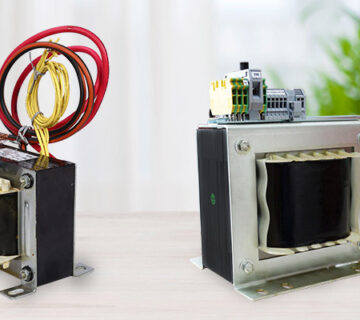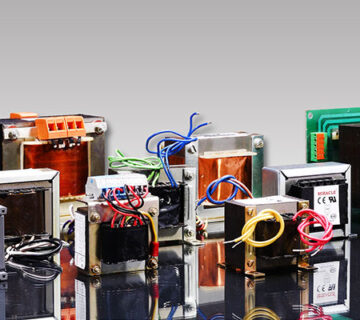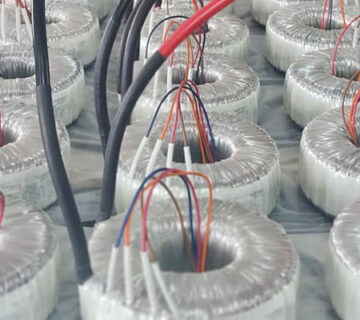Switched Mode Power Supplies (SMPS) are much complex as compared to linear regulated power supplies, but the complexity results in stable regulated DC supply, delivering more efficiency at a lesser weight and cost. There are two main categories of SMPS topologies – isolated converters and non-isolated converters. But, in this blog, we’ll take a closer look at only non-isolated converter topologies, focusing on three main types of converters – buck, boost, and buck-boost.
Buck converters
Buck converters convert high input voltage into a stabilized lower output voltage. It is a simple non-isolating circuit with the inductor current controlled by a top switch and diode, making it absolutely suitable for step down voltages as a DC-to-DC converter.
Working – When the switch is switched on, the energy is transferred to the load as well as the inductor. And, when it is switched off, the inductor voltage reverses and the freewheeling diode becomes forward biased, with the energy stored in the inductor supplying the load, providing effective filtering of the inductor current. Thus, the buck and its derivatives all have very low output ripple characteristics. The buck is generally always operated in continuous mode where peak currents are lower, and the smoothing capacitor requirements are smaller.
Advantages & disadvantages – As you can see, buck converters are very simple, requiring only one power switch. Moreover, the size and cost of such converters are comparatively very low, with the efficiency being as large as 90%, and the line voltage variation having large tolerance. However, with all these advantages, there is one small disadvantage that the PWM regulator feedback circuit requires a minimum output ripple to regulate properly. But, despite the drawback, many applications like RAMs, CPUs, and USBs utilize buck converters due to the number of advantages they offer.
Boost converters
Boost converters convert lower input voltage into a stabilized higher output voltage. When the switch is switched on, the diode is reverse biased, and the energy is stored in the inductor, and the capacitor supplies current to the load. And, when it is switched off, the energy stored in the inductor is transferred to the load. Here, the output voltage can be higher than the input due to the summation of the voltage pre-stored in the inductor and Voltage-In.
Working – The current supplied to the output smoothing capacitor from the converter must be large, with a low equivalent series resistance, in order to produce a relatively acceptable output ripple. In addition, the boost input current provides low input ripple characteristics, making the boost converter ideal for power factor correction applications to regulate the input supply and improve the line power factor.
Advantages & disadvantages – The boost converter is thus able to step up the voltage at lowest component count, with a continuous input current. And, the switch used here has common ground with the source, making the drive circuit and control circuit arrangement easier. However, one disadvantage here is that the charging current of the output capacitor is discontinuous, resulting in a larger capacitor size and EMI issues. Boost converters are mainly used in applications having power factor correction circuits such as battery power systems and electric cars.
Buck-Boost converters
As the name itself suggests, these converters are a combination of the buck and boost converters, which helps to produce an inverted output voltage, greater or lesser than the input voltage, based on the duty cycle. Here, the inverting converter only delivers the energy stored by the inductor into the load, but very large output filter capacitors are required, and low ripple levels are very difficult to achieve with buck-boost converters.
Working – When the switch is switched on, the diode is reverse biased and the energy is stored in the inductor, and the capacitor supplies current to the load. And, when it is switched off, the energy stored in the inductor is transferred to the load through the inductor and forward biased diode.
Advantages & disadvantages – With buck-boost converters, the input voltage can be higher or lower than the regulated output voltage. But, the switch does not have a ground connection, meaning that a level translator is needed in the PWM output circuit, which can add cost and complexity to the design. Such converters are used mainly in stabilizing photovoltaic cell outputs.
So, what kind of converters are suited to your application? Find out the same and get in touch with a trusted SMPS transformer manufacturer in India, one like Miracle Electronics, where you can get both off-the-shelf as well as customized SMPS transformers, both kinds being RoHS and REACH compliant, thus assuring quality.




